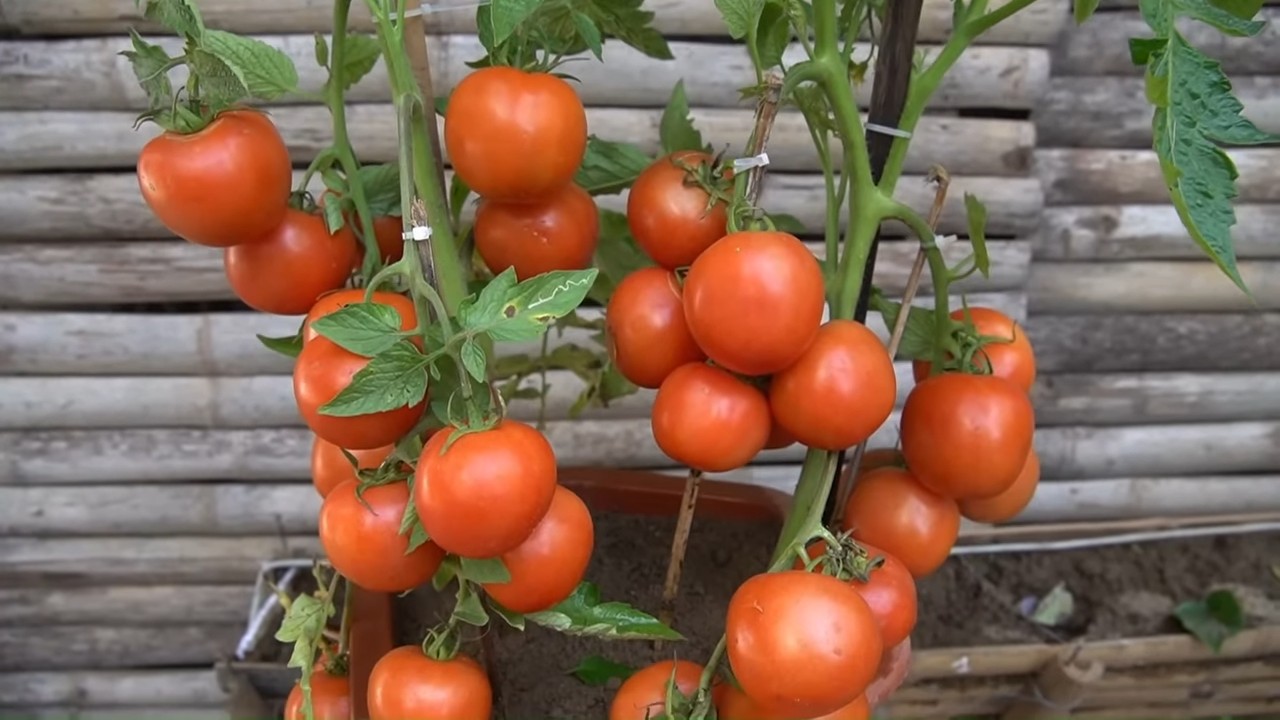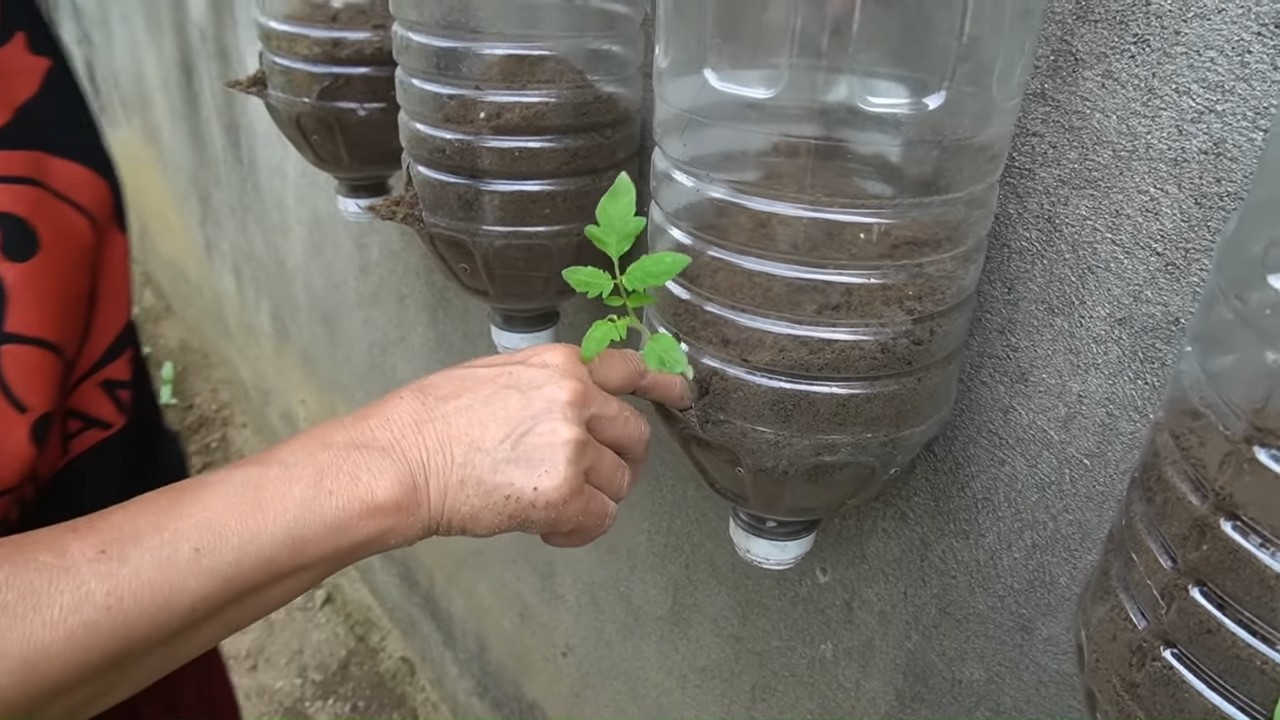Vertical tomato garden no backyard? No problem! I’m so excited to share some amazing DIY tricks that will let you grow juicy, delicious tomatoes even if you’re short on space. Forget the sprawling garden – we’re going vertical!
For centuries, humans have cultivated tomatoes, tracing back to their origins in South America. From humble beginnings, they’ve become a global staple, gracing our salads, sauces, and sandwiches. But what if you live in an apartment or have a tiny patio? Does that mean you have to miss out on the joy of harvesting your own sun-ripened tomatoes? Absolutely not!
That’s where the magic of a vertical tomato garden comes in. This DIY project is perfect for anyone who wants to enjoy fresh, homegrown tomatoes without needing a traditional backyard. Imagine plucking ripe, red tomatoes right from your balcony – it’s easier than you think! This article will guide you through creating your own space-saving vertical tomato garden, offering simple, budget-friendly solutions that will transform your small space into a thriving tomato haven. Get ready to unleash your inner gardener and enjoy the taste of summer, no matter where you live!

Creating a Stunning Vertical Tomato Garden, Even Without a Backyard!
Hey there, fellow gardening enthusiasts! Dreaming of juicy, homegrown tomatoes but lacking the sprawling backyard to make it happen? Don’t fret! I’m here to show you how to build a fantastic vertical tomato garden that’s perfect for balconies, patios, or even a sunny corner indoors. This project is surprisingly simple, budget-friendly, and incredibly rewarding. Get ready to enjoy fresh, delicious tomatoes all season long!
What You’ll Need: The Supplies List
Before we dive in, let’s gather our supplies. I’ve tried to keep this list as accessible as possible, using materials you can easily find at your local hardware store or garden center.
* 5-Gallon Buckets (5-6): These will be our individual tomato planters. Make sure they’re food-grade plastic!
* Potting Mix: A high-quality potting mix is crucial for healthy tomato growth. I recommend a mix specifically formulated for vegetables.
* Tomato Seedlings: Choose determinate (bush) varieties for best results in containers. Indeterminate (vining) varieties can work, but they’ll require more pruning and support.
* Drill with Drill Bits: We’ll need this to create drainage holes in the buckets.
* Measuring Tape: For accurate spacing and cutting.
* Landscape Fabric or Burlap: To line the buckets and prevent soil erosion.
* Staple Gun (Optional): To secure the landscape fabric.
* PVC Pipe (1-inch diameter): This will form the central support structure. The length depends on how tall you want your vertical garden to be. I suggest 6-8 feet.
* PVC Pipe Caps (2): One for the top and one for the bottom of the PVC pipe.
* PVC Cement: To glue the caps onto the PVC pipe.
* Metal Stakes or Rebar: To anchor the PVC pipe into the ground or a large planter.
* Zip Ties or Twine: For securing the buckets to the PVC pipe.
* Gloves: To protect your hands.
* Safety Glasses: Always a good idea when drilling!
* Watering Can or Hose: For watering your tomatoes.
* Fertilizer: A balanced fertilizer specifically for tomatoes.
* Optional: Decorative Paint or Stain: To personalize your buckets.
Step-by-Step Guide: Building Your Vertical Tomato Oasis
Okay, let’s get our hands dirty! Follow these steps carefully, and you’ll have a thriving vertical tomato garden in no time.
Phase 1: Preparing the Buckets
1. Drill Drainage Holes: This is super important! Turn each bucket upside down and drill at least 5-6 drainage holes in the bottom. This prevents waterlogging, which can lead to root rot. I usually space them evenly around the bottom.
2. Line the Buckets: Cut pieces of landscape fabric or burlap slightly larger than the inside of each bucket. This helps retain moisture and prevents soil from washing out through the drainage holes. Place the fabric inside each bucket, pressing it against the sides and bottom. You can use a staple gun to secure it if you like, but it’s not essential.
3. Optional: Decorate the Buckets: If you want to add a personal touch, now’s the time to paint or stain your buckets. Let them dry completely before moving on to the next step. I like to use bright, cheerful colors!
Phase 2: Constructing the Support Structure
1. Prepare the PVC Pipe: Measure and cut the PVC pipe to your desired height. Remember to factor in the depth you’ll be burying it in the ground or planter.
2. Attach the PVC Caps: Apply PVC cement to the inside of the PVC caps and firmly attach them to both ends of the pipe. Let the cement dry completely according to the manufacturer’s instructions. This creates a sealed, stable support.
3. Anchor the PVC Pipe: This is crucial for stability, especially if you live in a windy area. If you’re placing your vertical garden in the ground, drive metal stakes or rebar into the ground a few inches away from the base of the PVC pipe. Secure the pipe to the stakes with zip ties or strong twine. If you’re using a large planter, bury the base of the PVC pipe deep within the planter and fill it with heavy rocks or gravel for added stability.
Phase 3: Assembling the Vertical Garden
1. Position the Buckets: Decide how you want to arrange the buckets on the PVC pipe. I like to stagger them for better sunlight exposure. Mark the positions on the PVC pipe where you’ll attach the buckets.
2. Attach the Buckets: This is where the zip ties or twine come in handy. Carefully position each bucket against the PVC pipe at the marked locations. Use zip ties or twine to securely attach the buckets to the pipe. Make sure the buckets are level and stable. I usually use at least two zip ties per bucket for extra security.
3. Add Potting Mix: Fill each bucket with high-quality potting mix, leaving a few inches of space at the top. Gently pat down the soil to remove any air pockets.
Phase 4: Planting Your Tomato Seedlings
1. Plant the Seedlings: Carefully remove the tomato seedlings from their containers. Gently loosen the roots before planting. Plant one seedling in the center of each bucket.
2. Water Thoroughly: Water the seedlings thoroughly after planting. This helps settle the soil and encourages root growth.
3. Add Support (If Needed): If you’re growing indeterminate tomato varieties, you’ll need to provide additional support as they grow. You can use tomato cages or stakes to help them stay upright.
Caring for Your Vertical Tomato Garden: Tips and Tricks
Now that your vertical tomato garden is built, it’s time to learn how to care for it properly. Here are some essential tips to ensure a bountiful harvest:
* Watering: Tomatoes need consistent watering, especially during hot weather. Check the soil moisture regularly and water when the top inch feels dry. Avoid overwatering, as this can lead to root rot. I usually water deeply every 2-3 days, depending on the weather.
* Fertilizing: Tomatoes are heavy feeders, so regular fertilization is essential. Use a balanced fertilizer specifically formulated for tomatoes. Follow the instructions on the fertilizer package. I like to fertilize every 2-3 weeks.
* Sunlight: Tomatoes need at least 6-8 hours of sunlight per day. Choose a location that receives plenty of sun. If you’re growing your tomatoes indoors, you may need to supplement with grow lights.
* Pruning: If you’re growing indeterminate tomato varieties, you’ll need to prune them regularly to remove suckers (the small shoots that grow between the main stem and the branches). This helps improve air circulation and encourages fruit production.
* Pest Control: Keep an eye out for common tomato pests, such as aphids, whiteflies, and tomato hornworms. Treat infestations promptly with insecticidal soap or other appropriate methods. I always try to use organic pest control methods whenever possible.
* Support: As your tomato plants grow, they may need additional support. Use tomato cages or stakes to help them stay upright and prevent the branches from breaking under the weight of the fruit.
* Harvesting: Harvest your tomatoes when they are fully ripe and have a deep, rich color. Gently twist the tomatoes off the vine.
Troubleshooting Common Problems
Even with the best care, you may encounter some problems with your tomato plants. Here are some common issues and how to address them:
* Yellowing Leaves: This can be caused by a variety of factors, including overwatering, underwatering, nutrient deficiencies, or pests. Check the soil moisture and fertilize if necessary. Inspect the plants for pests and treat accordingly.
* Blossom End Rot: This is a common problem caused by calcium deficiency. Ensure your soil has adequate calcium and water consistently. You can also add calcium supplements to the soil.
* Cracked Tomatoes: This is usually caused by inconsistent watering. Water your tomatoes regularly and deeply, especially during dry spells.
* Lack of Fruit: This can be caused by a lack of pollination. Gently shake the tomato plants to help distribute pollen. You can also use a small paintbrush to manually pollinate the flowers.
Enjoying Your Homegrown Tomatoes!
Congratulations! You’ve successfully built and maintained your own vertical tomato garden. Now it’s time to enjoy the fruits (or vegetables!) of your labor. There’s nothing quite like the taste of a fresh, homegrown tomato. Use them in salads, sandwiches, sauces, or simply enjoy them sliced with a little salt and pepper.
I hope this guide has inspired you to create your own vertical tomato garden. It’s a fun, rewarding project that will bring you fresh, delicious tomatoes all season long. Happy gardening!

Conclusion
So, there you have it! Creating your own vertical tomato garden, even without a backyard, is not only achievable but also incredibly rewarding. We’ve walked through the steps, highlighted the benefits, and hopefully, inspired you to embrace this space-saving, yield-boosting gardening method.
Why is this DIY trick a must-try? Because it democratizes gardening. It empowers anyone, regardless of their living situation, to experience the joy of growing their own food. Imagine plucking ripe, juicy tomatoes straight from your balcony or patio, knowing you nurtured them from seedling to fruit. That’s a level of satisfaction you simply can’t buy at the grocery store. Beyond the personal fulfillment, a vertical tomato garden is an eco-conscious choice. You’re reducing your carbon footprint by minimizing transportation needs and potentially avoiding pesticides often used in commercial farming. Plus, it’s just plain beautiful! A lush, green wall of tomato plants adds a vibrant touch to any urban landscape.
But the beauty of this DIY project lies in its adaptability. Feel free to experiment with different container types. While we suggested using stackable planters or repurposed pallets, you could also explore hanging baskets, fabric grow bags, or even creatively upcycled plastic bottles. The key is to ensure adequate drainage and sufficient space for the roots to thrive.
Consider the tomato varieties you choose. While determinate tomatoes (bush varieties) are generally recommended for containers due to their compact size, you can certainly grow indeterminate tomatoes (vining varieties) with proper support and pruning. Cherry tomatoes, grape tomatoes, and Roma tomatoes are all excellent choices for vertical gardens.
Don’t be afraid to get creative with companion planting. Basil, marigolds, and nasturtiums are known to deter pests and attract beneficial insects, creating a healthier environment for your tomato plants. Plus, they add visual interest and culinary versatility to your garden.
We strongly encourage you to embark on this gardening adventure. The initial setup might seem a bit daunting, but the long-term benefits – fresh, homegrown tomatoes, a beautiful green space, and a sense of accomplishment – are well worth the effort. Remember to document your progress, share your successes (and even your challenges!), and connect with fellow gardeners online. Your experience could inspire others to take the plunge and discover the joys of vertical gardening.
Most importantly, remember that gardening is a learning process. Don’t be discouraged if you encounter setbacks along the way. Every season brings new opportunities to learn and improve. So, grab your gardening gloves, gather your supplies, and get ready to transform your small space into a thriving vertical tomato garden. We can’t wait to hear about your experience! Share your photos and stories with us – we’re eager to see your creations and learn from your insights. Happy gardening!
Frequently Asked Questions (FAQ)
What type of tomatoes are best for a vertical garden?
The best types of tomatoes for a vertical garden are generally determinate (bush) varieties. These tomatoes are more compact and don’t require as much pruning as indeterminate (vining) varieties. Excellent choices include:
* **Cherry Tomatoes:** These are prolific producers and their small size makes them ideal for containers.
* **Grape Tomatoes:** Similar to cherry tomatoes, grape tomatoes are also well-suited for vertical gardens.
* **Roma Tomatoes:** These are a good option if you want to grow tomatoes for sauces or canning.
* **Patio Tomatoes:** As the name suggests, these are specifically bred for container gardening.
However, if you’re willing to provide extra support and pruning, you can also grow indeterminate varieties in a vertical garden. Just be prepared to train them up a trellis or other support structure.
How much sunlight do vertical tomato gardens need?
Tomatoes need at least 6-8 hours of direct sunlight per day to thrive. Choose a location for your vertical garden that receives ample sunlight. If you don’t have a spot that gets enough sun, you may need to supplement with grow lights.
What kind of soil should I use for my vertical tomato garden?
Use a high-quality potting mix that is well-draining and rich in organic matter. Avoid using garden soil, as it can become compacted in containers and doesn’t drain as well. You can also amend your potting mix with compost or other organic fertilizers to provide your tomato plants with the nutrients they need.
How often should I water my vertical tomato garden?
Water your tomato plants regularly, especially during hot, dry weather. Check the soil moisture by sticking your finger into the soil. If the top inch or two feels dry, it’s time to water. Water deeply, until water drains out of the bottom of the container. Avoid overwatering, as this can lead to root rot.
How do I fertilize my vertical tomato garden?
Tomatoes are heavy feeders, so you’ll need to fertilize them regularly. Use a balanced fertilizer that is specifically formulated for tomatoes. Follow the instructions on the fertilizer package. You can also use organic fertilizers, such as compost tea or fish emulsion.
How do I prevent pests and diseases in my vertical tomato garden?
There are several things you can do to prevent pests and diseases in your vertical tomato garden:
* **Choose disease-resistant varieties:** Look for tomato varieties that are labeled as resistant to common tomato diseases.
* **Provide good air circulation:** Space your plants properly to allow for good air circulation.
* **Water properly:** Avoid overwatering and water at the base of the plant to prevent fungal diseases.
* **Inspect your plants regularly:** Check your plants regularly for signs of pests or diseases.
* **Use organic pest control methods:** If you find pests, try using organic pest control methods, such as insecticidal soap or neem oil.
* **Companion Planting:** Plant basil or marigolds near your tomatoes to deter pests.
How do I support my tomato plants in a vertical garden?
Depending on the type of vertical garden you’ve created, you may need to provide additional support for your tomato plants. For example, if you’re using hanging baskets, you may need to use tomato cages or stakes to support the plants as they grow. If you’re using a trellis, train the tomato vines to grow up the trellis.
Can I grow other vegetables in my vertical garden besides tomatoes?
Yes, you can grow other vegetables in your vertical garden besides tomatoes. Good choices include:
* **Herbs:** Basil, oregano, thyme, and rosemary are all great choices for vertical gardens.
* **Lettuce and other leafy greens:** These are easy to grow and don’t require much space.
* **Peppers:** Peppers are relatively compact and can be grown in containers.
* **Strawberries:** Strawberries are a fun and rewarding addition to any vertical garden.
What do I do if my tomato plants are not producing fruit?
There are several reasons why your tomato plants may not be producing fruit:
* **Lack of pollination:** Tomatoes are self-pollinating, but they may need help from wind or insects to pollinate properly. You can hand-pollinate your tomato plants by gently shaking the flowers.
* **Too much nitrogen:** Too much nitrogen can promote leafy growth at the expense of fruit production. Use a fertilizer that is lower in nitrogen and higher in phosphorus and potassium.
* **High temperatures:** High temperatures can inhibit fruit set. Provide shade for your tomato plants during the hottest part of the day.
* **Lack of water:** Insufficient watering can stress the plants and prevent them from producing fruit. Water your tomato plants regularly, especially during hot, dry weather.
How do I harvest my tomatoes?
Harvest your tomatoes when they are fully ripe and have reached their mature color. Gently twist the tomato off the vine. Store your tomatoes at room temperature for the best flavor.





Leave a Comment